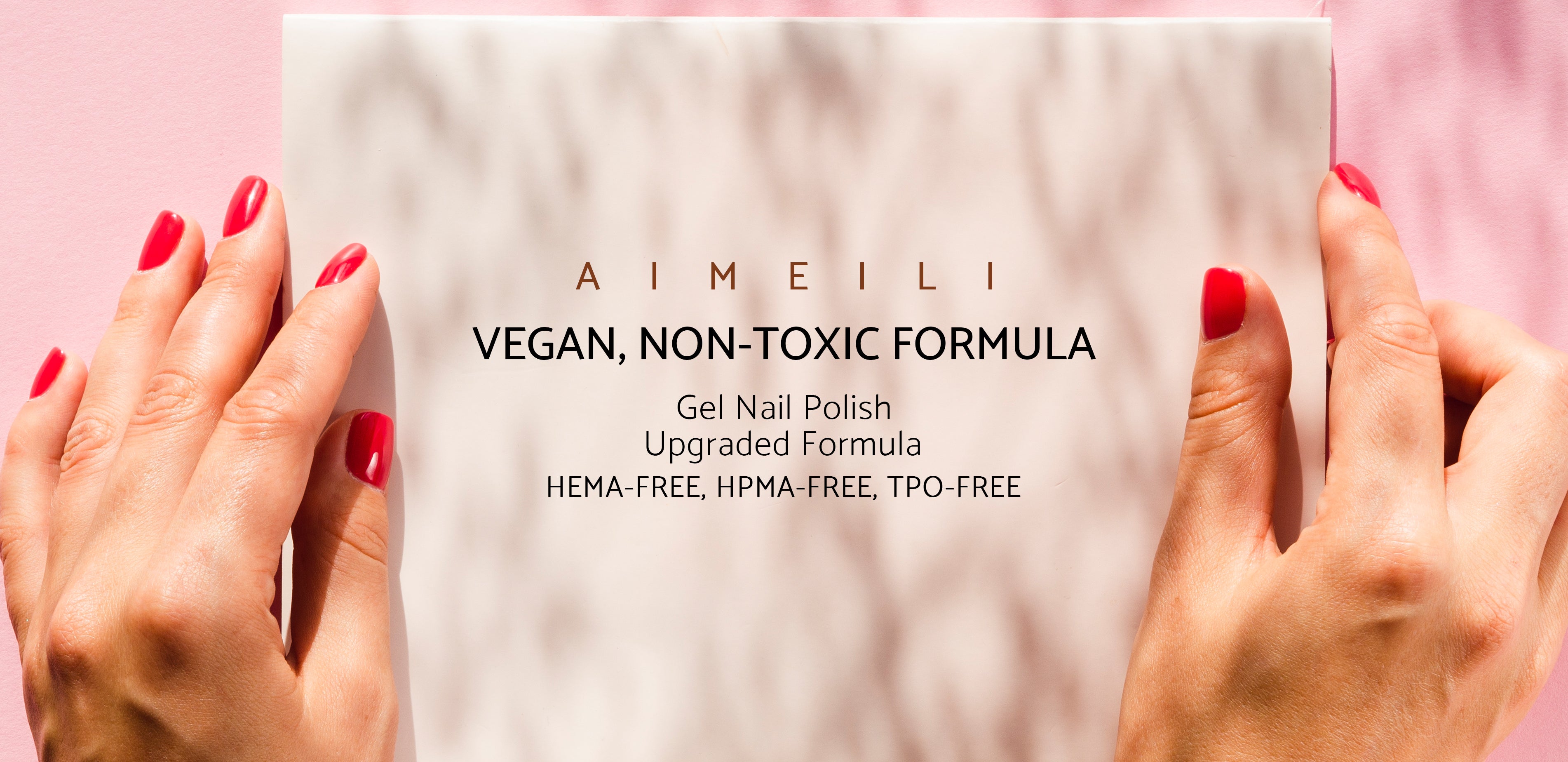
Image avec texte
Associez du texte à une image pour vous concentrer sur le produit, la collection ou l'article de blog que vous avez choisi. Ajoutez des détails sur la disponibilité, le style ou même fournissez un avis.
FAQs
What are HEMA, HPMA, TPO and optical brightener?
HEMA is an abbreviation for 2-hydroxyethyl methacrylate. It’s a very small chemical that can be absorbed into the skin and bloodstream. In a study of 4,931 people during 2017, HEMA was the most common (meth)acrylate chemical to cause allergic sensitization. This result raised the concern of the British Association of Dermatologists and they published a paper in 2018 warning about the artificial nail products allergy epidemic.
HPMA is an abbreviation for 2-hydroxypropyl methacrylate. It’s the next most common (meth)acrylate chemical to cause allergic reactions in the same study.
TPO is an abbreviation for trimethylbenzoyl diphenylphosphine oxide. It’s considered a moderate skin sensitizer, according to the Scientific Committee on Consumer Safety, one of the independent scientific committees of the European Commission.
Optical brighteneris often used to enhance the appearance of the polish colour, and it is suspected to cause allergic reactions when in contact with skin.
What problems can these substances cause in the body?
In 2018, the British Association of Dermatologists issued a warning that (meth)acrylate chemicals such as HEMA and HPMA in acrylic nails, gel nails and gel polish nails are causing a contact allergy epidemic. In a study of 4,931 people in the UK and Ireland, 1.5% of these people were tested positive for allergy to HEMA and 1% were tested positive to HPMA. The study also found that this allergy is predominantly found in women, who made up 93% of those affected.
Allergic reactions to these chemicals may involve loosening of the nails or a severe red, itchy rash, not just on the fingertips, but potentially anywhere on the body that has come into contact with the nails, including the eyelids, face, neck and genital region. Very rarely, symptoms such as breathing problems can occur.
Considering that inappropriate application may cause increased risk of allergic reactions, the European Commission requires that warnings reading “For professional use only” and “Can cause an allergic reaction” appear on the packaging of nail products containing HEMA.
According to a paper published by the Scientific Committee on Consumer Safety in 2014, TPO is safe when used as a nail modelling product at a concentration of at maximum 5.0%. However, the committee holds an opinion that TPO is considered a moderate skin sensitizer. Apparently the safety of TPO is conditional, using TPO-free products will protect you from the potential risks caused by TPO.
Optical brighteners can potentially cause skin irritations. More research is needed to fully understand the long-term effects of exposure to these chemicals. Needless to say, using products without optical brighteners will keep you away from the potential risks.
Based on these facts, it’s clear that HEMA free, HPMA free, TPO free and optical brightener free gel nail products are much healthier choices compared to traditional products. However, please be aware that gel polish may contain other allergens that can cause allergic reactions. Due to individual differences, different people might be allergic to different substances at different levels. Therefore, it is recommended that you undergo a patch test with your dermatologist to identify your specific allergens.
Are AIMEILI Gel Polishes completely allergy-free?
Our gel polishes are HEMA Free and TPO Free, reducing common allergens. However, everyone’s skin is different. We recommend a patch test before full application.
What lamp should I use for AIMEILI Gel Polish?
For best results, cure with a 48W or higher UV/LED nail lamp.
LED mode: 30–60 seconds
UV mode: 2 minutes


